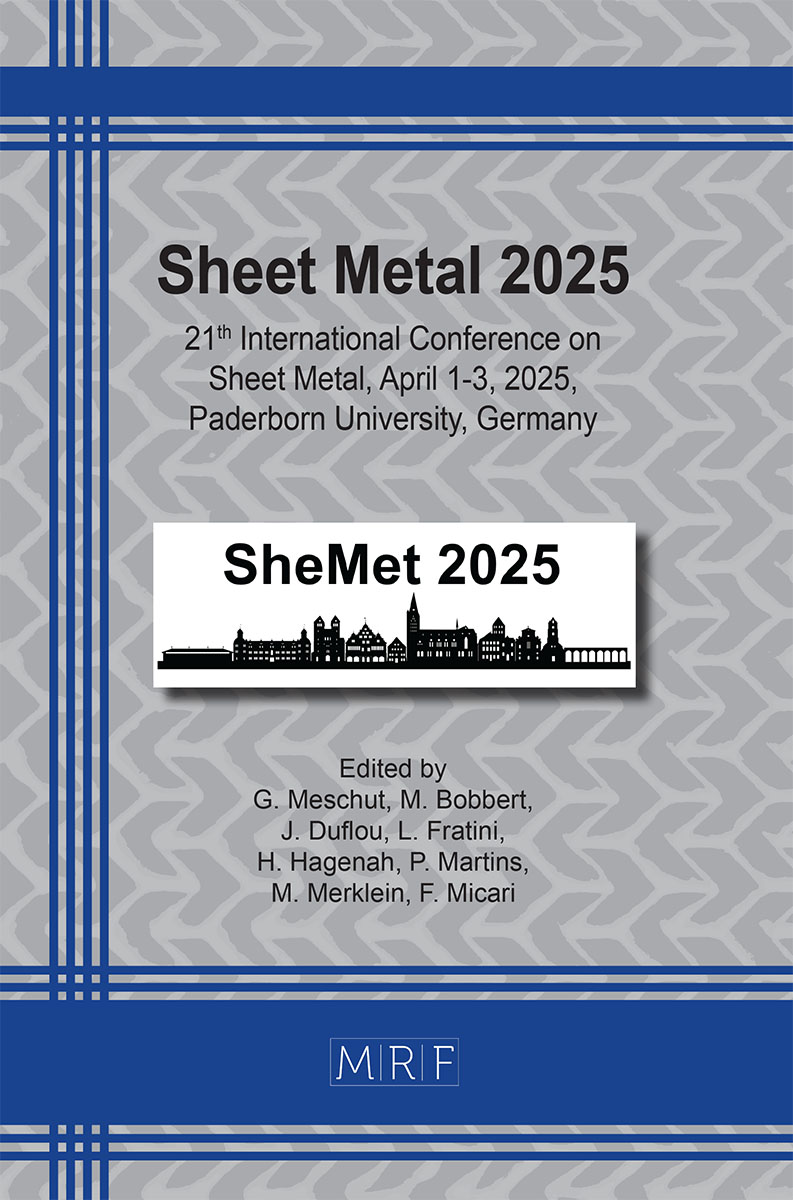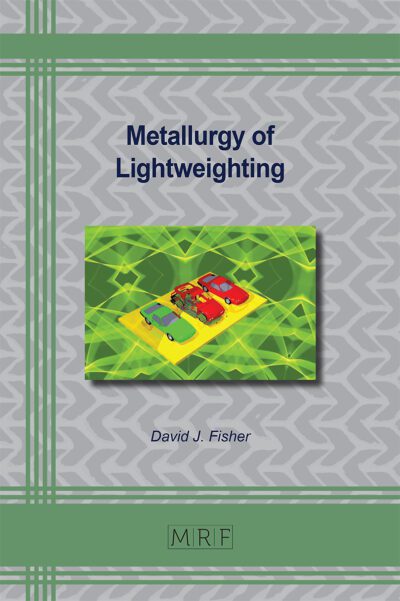Analysis of the binding mechanisms depending on versatile process variants of self-piercing riveting
Stephan Lüder, Pia K. Holtkamp, Simon Wituschek, Mathias Bobbert, Gerson Meschut, Michael Lechner, Hans C. Schmale
Abstract. The constantly increasing demand for climate protection and resource conservation requires innovative and versatile joining processes that improve adaptability to the joining task and robustness to enable flexible manufacturing on a production line. Therefore, the versatile SPR (V-SPR) and tumbling SPR (T-SPR) were developed. Using the example of a mixed material combination HCT590X+Z (t0 = 1.0 mm) / EN AW-6014 T4 (t0 = 2.0 mm), these processes were examined and compared with regard to the binding mechanisms form closure and force closure using micrographs, non-destructive resistance measurements and destructive torsion tests. For this purpose, a new sample geometry was defined, and the methods were adapted to the SPR process variants.
Keywords
Joining, Sheet Metal, Self-Piercing Riveting
Published online 4/1/2025, 8 pages
Copyright © 2025 by the author(s)
Published under license by Materials Research Forum LLC., Millersville PA, USA
Citation: Stephan Lüder, Pia K. Holtkamp, Simon Wituschek, Mathias Bobbert, Gerson Meschut, Michael Lechner, Hans C. Schmale, Analysis of the binding mechanisms depending on versatile process variants of self-piercing riveting, Materials Research Proceedings, Vol. 52, pp 101-108, 2025
DOI: https://doi.org/10.21741/9781644903551-13
The article was published as article 13 of the book Sheet Metal 2025
![]() Content from this work may be used under the terms of the Creative Commons Attribution 3.0 license. Any further distribution of this work must maintain attribution to the author(s) and the title of the work, journal citation and DOI.
Content from this work may be used under the terms of the Creative Commons Attribution 3.0 license. Any further distribution of this work must maintain attribution to the author(s) and the title of the work, journal citation and DOI.
References
[1] European Commission, European Green Deal, Brussels, 2021.
[2] B. Bader, E. Türck, T. Vietor, Multi Material Design. A current overview of the used potential in automotive industries, in: K. Dröder, T. Vietor (Eds.), Technologies for economical and functional lightweight design, Springer Heidelberg, 2019, 3-13.
[3] G. Meschut, M. Merklein; A. Brosius et al., Review on mechanical joining by plastic deformation, J. Adv. Join. Process. 5 (2022) 100113. https://doi.org/10.1016/j.jajp.2022.100113
[4] DVS/EFB-Merkblatt 3410: Self-pierce riveting – Overview, Europäische Forschungs-gesellschaft für Blechverarbeitung e.V. (EFB), Düsseldorf, 2020
[5] F. Kappe, S. Wituschek, M. Bobbert, and G. Meschut, Determining the properties of multi-range semi-tubular self-piercing riveted joints, Prod. Eng. Res. Devel. 16 (2022) 363-378. https://doi.org/10.1007/s11740-022-01105-2
[6] S. Nikzad Khangholi, M. Javidani, A. Maltais, X.-G. Chen, Investigation on electrical conductivity and hardness of 6xxx aluminum conductor alloys with different Si levels, Proceedings of the 17th International Conference on Aluminium Alloys 2020 (ICAA17), Grenoble, France, 26-29 October 2020, MATEC Web of Conferences 326 (2020) 08002. https://doi.org/10.1051/matecconf/202032608002
[7] J. Zhang, M. Ma, F. Shen, D. Yi, B. Wang, Influence of deformation and annealing on electrical conductivity, mechanical properties and texture of Al-Mg-Si alloy cables, Mater. Sci. Eng., A 710, (2018) 27-37. https://doi.org/10.1016/j.msea.2017.10.065
[8] J. Kalich, U. Füssel, Influence of the Production Process on the Binding Mechanism of Clinched Aluminum Steel Mixed Compounds, J. Manuf. Mater. Process. 5 (2021) 105. https://doi.org/10.3390/jmmp5040105
[9] J. Kalich, U. Füssel, Design of clinched joints on the basis of binding mechanisms, Prod. Eng. Res. Devel. 16 (2022) 213-222. https://doi.org/10.1007/s11740-022-01108-z













